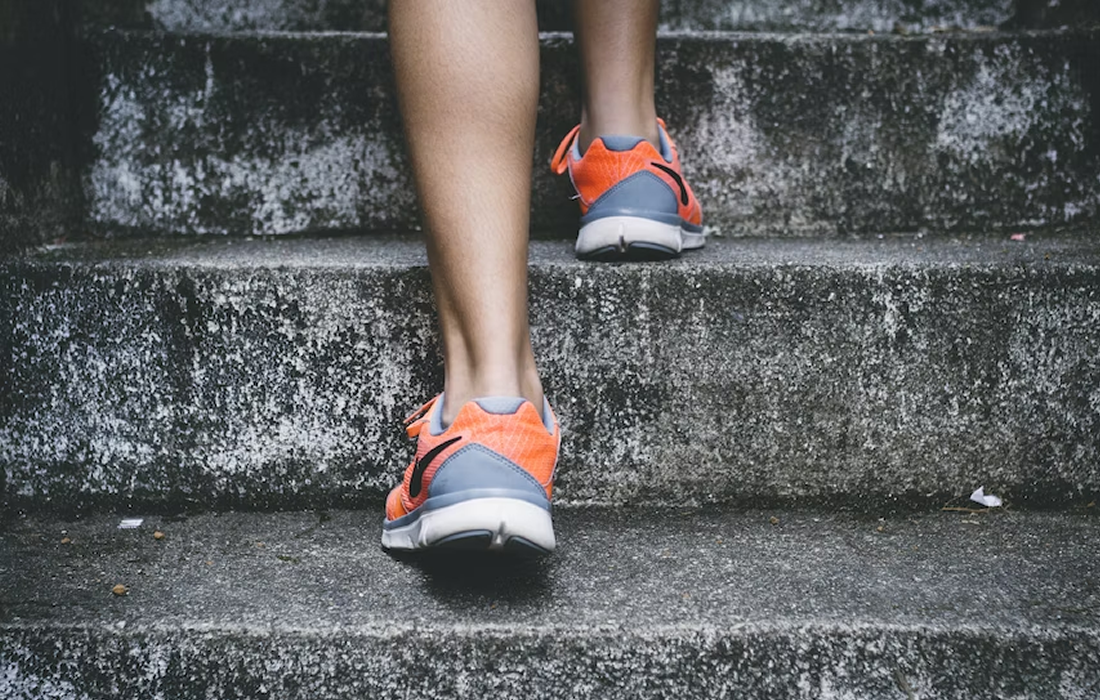Regenerative Medicine News and General Information
Step Count and Heart Health
More often, people are turning to consumer wearable devices, such as smartwatches, to monitor their health and physical activity.
Using these wearable devices, a study led by Michigan Medicine and the University of Missouri with Saint Luke’s Mid America Heart Institute finds that taking more daily steps is associated improved health, including fewer symptoms and physical limitations, for people with heart failure. The results are published in JACC: Heart Failure.
Clinicians are increasingly presented with their patients’ wearable device data, though interpretation has been challenging given a lack of normative data in different populations, says first author Jessica R. Golbus, M.D., clinical instructor of internal medicine-cardiology at University of Michigan Medical School.
“This is one of the first studies to provide context to wearable device data from heart failure patients and helps us to understand what physical activity data from a wearable device means at a population level as well as at the individual level,” Golbus said.
As part of a national, randomized clinical trial for heart failure, over 400 patients were given activity monitors to evaluate the relationship between daily step count, floors climbed, and their symptoms and physical limitations over 12 weeks. The CHIEF-HF trial used the Kansas City Cardiomyopathy Questionnaires (KCCQ) to gauge total symptoms and physical limitations.
Baseline step counts between 1,000 and 5,000 steps were associated with significantly improved symptoms and fewer physical limitations reflected by KCCQ scores, with little association seen beyond 5,000 steps.
People who walked 2,000 steps per day had total symptoms scores 3.11 points higher, and physical limitation scores 5.36 points higher, than those who walked 1,000 steps a day.
Participants who increased their step counts by 2,000 steps per-day during the 12 weeks experienced a clinically important greater than 5-point increase in physical limitation scores compared to those who did not change their step counts. While increases in step counts over time showed better symptom control and physical function, declines showed no relationship with these outcomes.
Consumer wearable devices are consistently mentioned in clinical care as possible tools to interpret functional performance and activity, and mobile health technology is increasingly used for recruitment, data collection and outcomes assessments in clinical trials.
For heart failure, the United States Food and Drug Administration has endorsed the use of patient-reported measures to support regulatory approval but not data from wearable devices.
The latest findings, researchers say, highlight the importance of understanding whether and how data from consumer wearables is clinically meaningful.
Given the growing interest in using measures of patients’ ‘real-world’ activity, the clinical and research community need to understand how to interpret the data shared by patients, says co-senior author John Spertus, M.D., Professor and Lauer/Missouri Endowed Chair at the University of Missouri-Kansas City School of Medicine.
“These data provide the first insight into how changes in activity relate to changes in patients’ health status, suggesting that we should interpret improvements in activity as indicating better health status but that we need not necessarily be as concerned about reductions in activity,” Spertus said.
Sources:
Jessica R. Golbus, Kensey Gosch, Mary C. Birmingham, Javed Butler, Ildiko Lingvay, David E. Lanfear, Antonio Abbate, Mikhail L. Kosiborod, C.V. Damaraju, James L. Januzzi, John Spertus, Brahmajee K. Nallamothu. Association Between Wearable Device Measured Activity and Patient-Reported Outcomes for Heart Failure. JACC: Heart Failure, 2023; DOI: 10.1016/j.jchf.2023.05.033
Michigan Medicine – University of Michigan. (2023, July 26). Increased step count linked to better health for people with heart failure: The results may inform interpretation of wearable device data in clinical and research settings, investigators say. ScienceDaily. Retrieved July 27, 2023 from www.sciencedaily.com/releases/2023/07/230726171257.htm
Image from:
https://unsplash.com/photos/PHIgYUGQPvU

